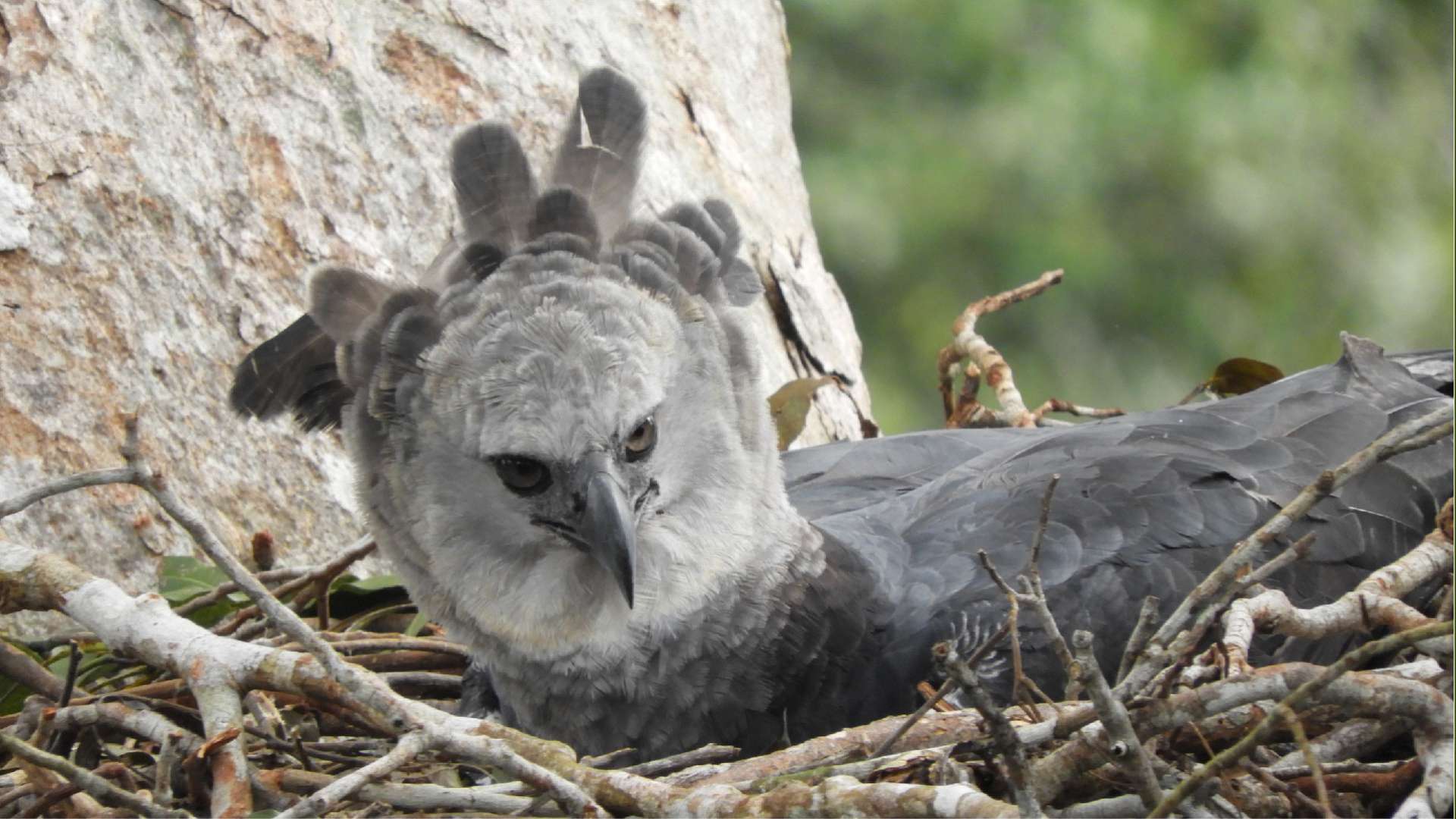HarpyCam is live! The first harpy eagle nest in the wild recorded by a camera trap, is located at Tambopata powered by Rainforest Expeditions.
Have you ever seen a harpy eagle in the wild? If the answer is yes, you're in luck! Biologists who have been working for more than 10 years in the Amazon have only rarely seen a harpy eagle.
This species of eagle is incredibly difficult to see in the wild, our research team was very excited to discover a harpy eagle nest with an egg near Refugio Amazonas.
After this incredible discovery, our AmazonCam team carefully climbed a nearby tree and installed the world's first HarpyCam and today, we are monitoring the activity of the harpy pair, Kee Wai and Baawaja and their new (soon to be named) chick.

Harpy eagle with chick by Rainforest expeditions
Harpy eagles (Harpia harpyja) are listed as Near Threatened on the International Union for Conservation of Nature (IUCN) Red List of Threatened Species. Hunting and habitat loss have contributed to the reduction of their population in their native range in Central and South America. They also have a low reproductive rate, hatching every two to three years, so scientists welcome new chicks with enthusiasm. As a result, the researchers are especially excited about the research and observation opportunities that the high-definition camera, which is available 24 hours a day, will provide.
Although both parents incubated the egg, the female, Kee Wai, assumed most of the responsibilities. After the chick hatches, both parents feed and care for it. Our research team aims to keep the chamber in the nest throughout the chick's rearing phase, which can last up to two years.

Harpy Eagle by Diego Balbuena

Harpy Eagle in the nest by Rainforest expeditions